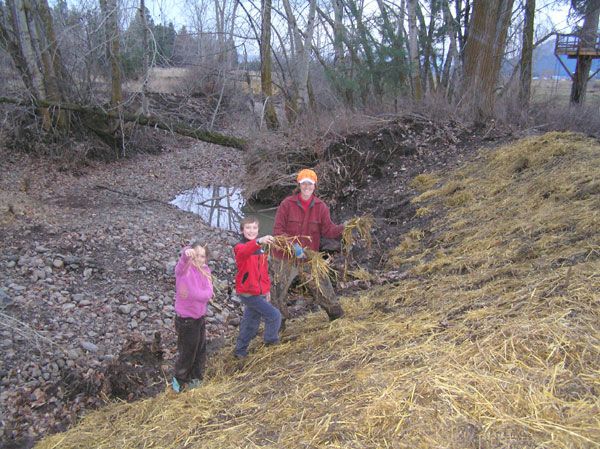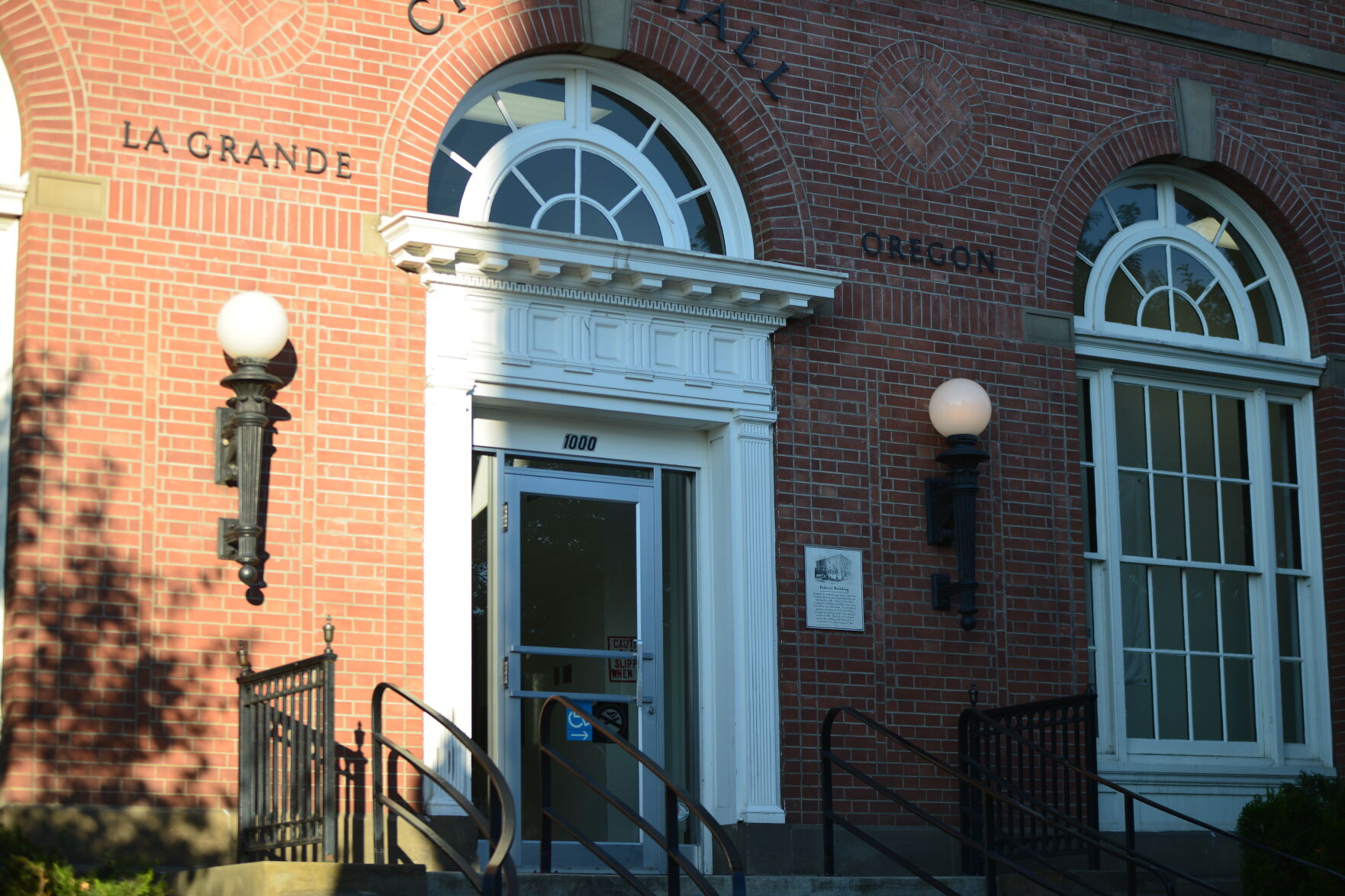Restoring Dry Creek
Published 11:54 am Saturday, December 6, 2008

- A FAMILY AFFAIR: Shelly and her children, Moriah and Caleb, lay straw over the re-seeded banks. - Submitted photo
Sometimes change comes about effortlessly.
More often than not, there’s a little more grunt work -and a lot of cooperation – involved.
Take the Hubbell farm off Craig Loop Road near Summerville. Shelly Hubbell and her husband, Colt, purchased the 40-acre property 3 1/2 years ago.
The land had been farmed up to the banks of Dry Creek, destabilizing the soil bounding the channel, increasing runoff and promoting under-cutting by the creek.
The stream was fairly straight, fast-moving and – without much riparian shade -hot. And that meant few fish.
“So we went to the Natural Resources Conservation Service office and asked if it was something they could help us with,” Shelly Hubbell said. “And they said yes.”
A number of agencies became involved in the process. Along with Eileen Larkin of NRCS, Hubbell was helped by Lisa Mahon and Layne Lindley of the Union Soil and Water Conservation District, Mary J. Headley-Hoffman of the Army Corps of Engineers and a team that conducted a cultural resources survey of the site for the Confederated Tribes of the Umatilla Reservation: Linda Jerofke, Ph.D, and Erik Harvey of Blue Mountain Consulting Inc., and Catherine Dickson with the Tribes.
The overall goal, Hubbell explained, is to slow the creek down and reduce erosion. This, in turn, will provide better habitat for wildlife and fish.
After their initial purchase, they left the stream alone, allowing it to begin meandering again.
The waters of Dry Creek -when it’s running -feed into the Grande Ronde River via Mill and Willow creeks.
The Hubbells hope to eventually move onto the property, which produces grass and alfalfa hay. They’ve been in California, Colt’s duty station as a lieutenant colonel with the Marines.
Earlier this year, Colt shipped off to Iraq. Shelly and their two children, Moriah, 10, and Caleb, 12, moved to the La Grande area temporarily to work on the restoration. For a portion of the summer, they lived in an RV on the Craig Loop farm itself, to get a feel for the land.
“The elk would wake me up bugling in the morning, and the deer would graze around the trailer,” Hubbell said.
Indeed, the property hosts everything from geese and wild turkey to coyotes and black bear. The elk have a habitual route across the creek and into the pasture.
Enlisting the help of relatives and friends, Hubbell has been spending the fall doing some major restoration work along the creek. They’ve laid crosshatched logs, 20 to 30 feet long and packed with rock and rebar, in the bankside soil to anchor it.
On a couple of gray and drizzly days this month, Hubbell and her children; her mother and step-father, Kathy and Cedric Shanks; her father and cousin, Gary and Brian Moe; Colt’s parents, Chris and Jim; and contractor Steve Lindley of Union braved the elements to plant willow whips and posts along the creek and seed the banks. Set deep enough to hit the water table, the poles should root through the winter.
“The goal of the whips and the posts is to stabilize the bank,” Hubbell said.
The fast-maturing willows will eventually provide greater shade, cooling the creek waters and encouraging greater use by fish – including the steelhead that historically spawned here.
On that count, Hubbell has observed some encouraging signs since beginning the restoration work.
“Now (the fish are) coming through,” she said. “We’re seeing more every year.
“We want it to be good habitat for the animals and the fish. It’s a win-win situation.”
She hopes to enter into the NRCS’s Conservation Reserve Program, which will fence off the riparian zone as a fallow part of the farm. The Hubbells will still have access to it for hunting and other recreation.
As they powered through the muddy willow work, the Hubbell family was upbeat.
“It’s a way to give back something that was lost,” said Chris.
It takes a lot of collaboration to achieve such an ambitious re-working of a landscape. In addition to the help of the agencies and extended family, Eileen and Greg Larkin donated 50 whole trees to the planting.
“Everyone just pulled together and helped me,” Hubbell marveled.
Colt will return to the United States in February; Hubbell and her children will be back in California to greet him. But they’ll be envisioning the day when they’ll set down permanent roots along Dry Creek.
By then, Hubbell knows the down-and-dirty work will have paid off.
“I can’t wait to see what it’ll look like.”





